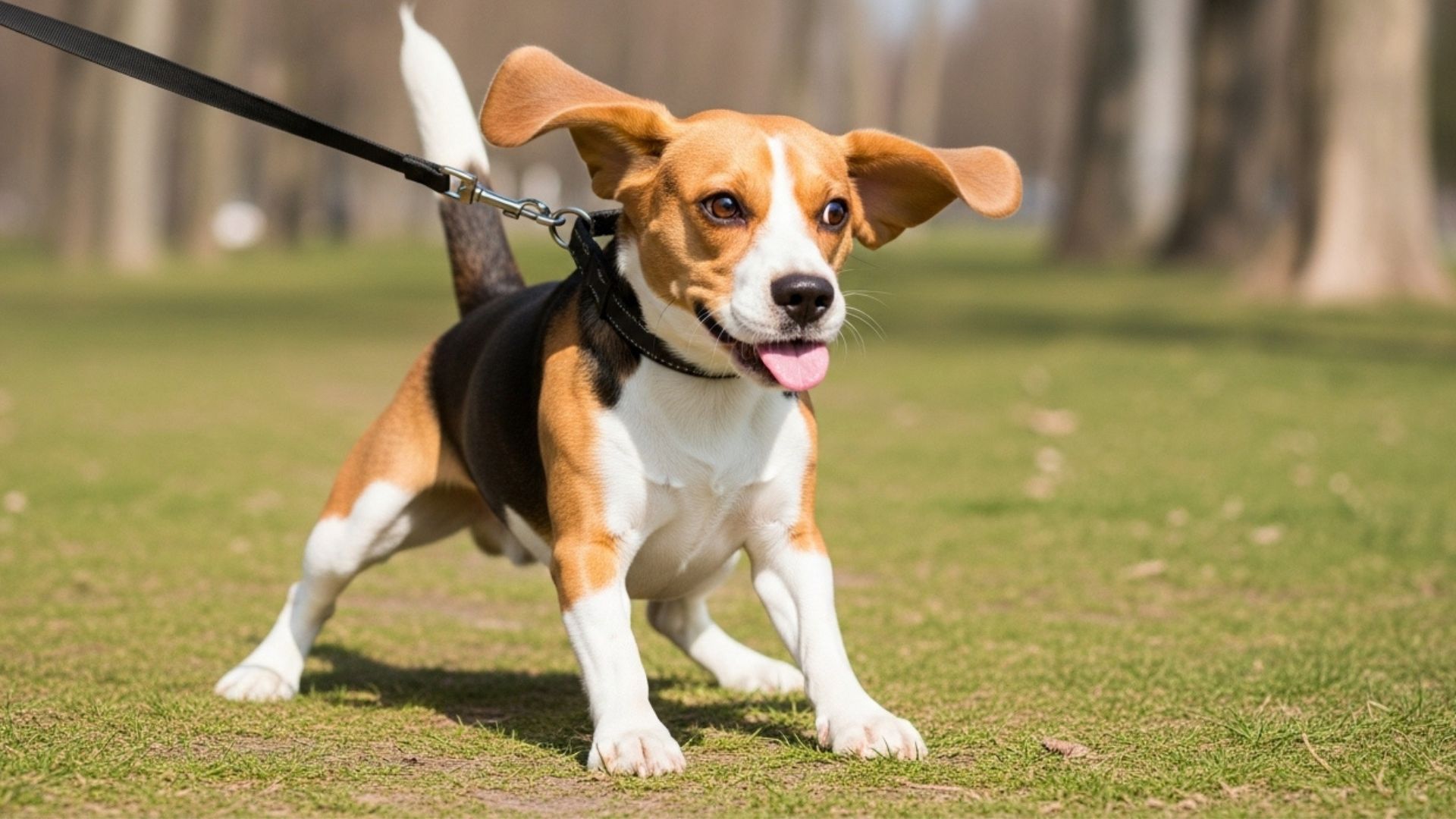When it comes to dogs, intelligence can be a tricky thing to measure. Some pups ace obedience training, while others prefer to follow their own rules. But does that really make them “dumb”? Not necessarily.
Many breeds that get labeled as the “dumbest” are actually clever in their own right—they’re just stubborn, independent, or easily distracted. Instead of eagerly fetching a ball, they might rather chase a squirrel, ignore commands, or test your patience with their selective hearing.
These breeds often thrive on doing things their way, which can frustrate owners who expect instant obedience. But peel back that stubborn streak, and you’ll find loyal companions with big personalities and unique strengths.
In this article, we’ll explore some of the dog breeds most often called the “dumbest”—not because they lack brains, but because they’re masters of independence. Get ready to meet the lovable rebels of the canine world.
Dumbest Dog Breeds Known For Being Stubborn
1. Bulldog
Bulldogs are one of the most recognizable dog breeds thanks to their wrinkled faces and stocky build. Known for their laid-back personalities, they often make wonderful companions in family settings. Despite their tough appearance, Bulldogs are famously gentle with children and thrive in a calm home environment.
When it comes to training, Bulldogs are frequently ranked among the “dumbest dog breeds” because of their strong-willed nature. They don’t lack intelligence, but they do prefer moving at their own pace. Patience and consistency are key when working with this stubborn breed.
Health is an important consideration for Bulldogs. According to the AKC, their short snouts can cause breathing difficulties, and these wrinkly pets are prone to overheating in warm weather. Owners should be mindful of exercise routines, keeping sessions short and controlled.
Exercise needs are moderate, making Bulldogs a great choice for apartment living. A daily walk and some playtime usually keep them content. They’re not high-energy dogs, so they’re happiest lounging close to their humans.
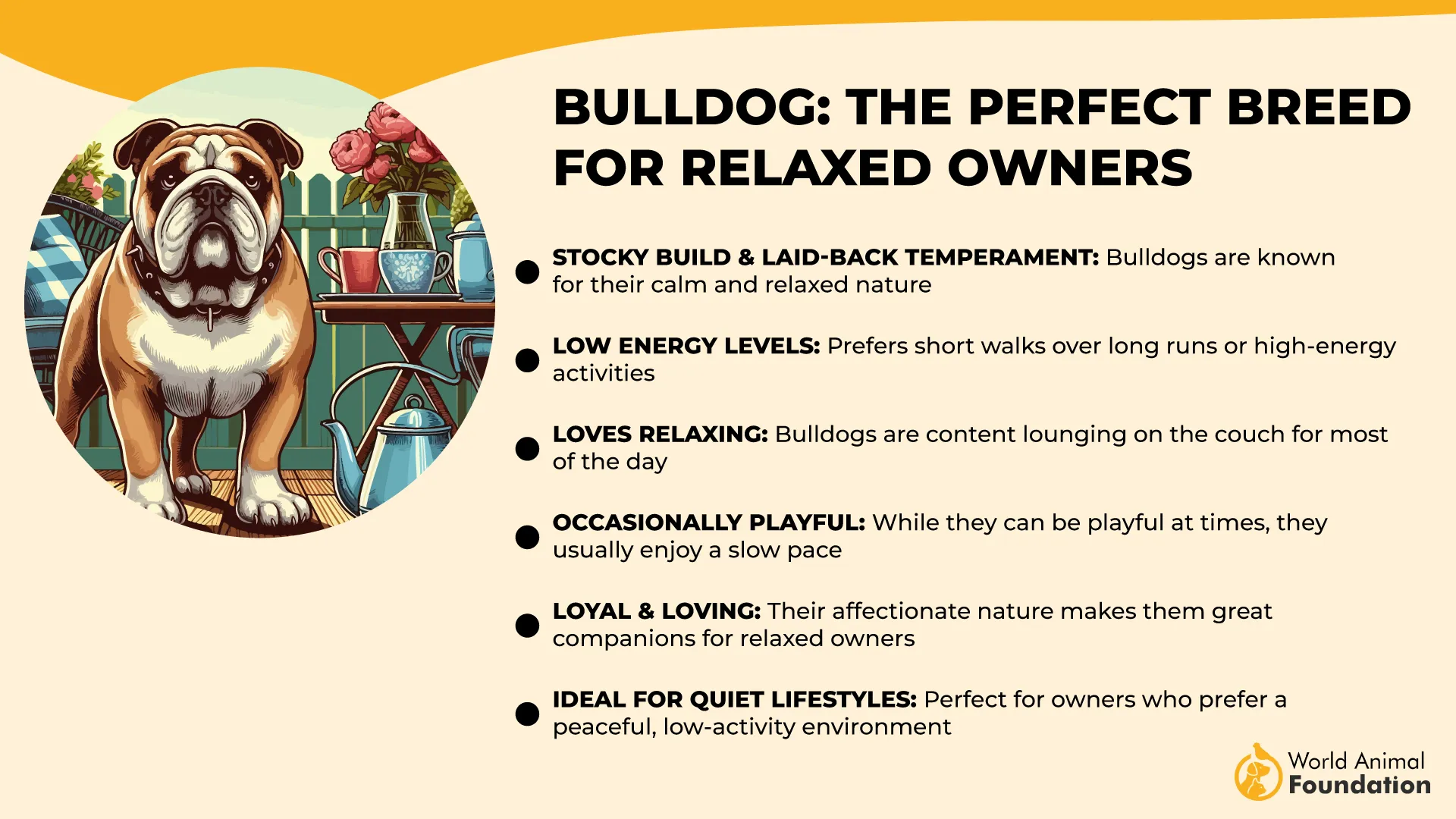
Beyond the “stubborn” label, Bulldogs bring immense loyalty. They form deep bonds with their families and are protective without being overly aggressive. This combination of gentleness and courage makes them a beloved breed worldwide.
Quick Tips
Use positive reinforcement with short, consistent training sessions.
Avoid overexertion, especially in hot weather.
2. Afghan Hound
The Afghan Hound is instantly recognizable by its long, silky coat and regal presence. Originally bred as a hunting dog in Afghanistan, this breed was designed to chase prey across harsh terrain. Their history gives them remarkable speed and agility, qualities still admired today.
Afghan Hounds are often labeled among the “dumbest dog breeds”, not because they lack smarts but because of their independent spirit. They aren’t as eager to please in the way many breeds are, which can make training a challenge. Patience is essential, as they may test limits before complying.
Grooming is a central part of Afghan Hound ownership. Their luxurious coat requires regular brushing to prevent tangles and mats. Many owners also choose professional grooming to maintain their signature flowing look.
PetMD states that this breed thrives in a household where it has space to run. Afghans have strong prey drives and will eagerly chase small animals if not properly supervised. A secure yard or controlled exercise area is ideal.
While often misunderstood as aloof, Afghan Hounds can be deeply affectionate with those they trust. They may not wear their loyalty as openly as other breeds, but their devotion runs deep once a bond is formed.
Quick Tips
Provide regular grooming to maintain coat health and shine.
Use patience and consistency when training, avoiding harsh methods.
3. Basenji
The Basenji, often called the “barkless dog,” is unique for its unusual vocalizations, which sound more like yodels than barks, as mentioned by Britannica. This breed originates from Central Africa, where it was used for hunting due to its agility and keen senses. Their alert and inquisitive nature makes them fascinating companions.
Listed among the “dumbest dog breeds” in some rankings, the Basenji’s reputation comes from its stubbornness. They’re highly intelligent but resistant to repetitive training drills. Owners often describe them as problem-solvers who prefer to find their own way.
Exercise is critical for the Basenji. With boundless energy and curiosity, they need daily outlets such as long walks, playtime, and mental enrichment. Without sufficient stimulation, they may become mischievous or destructive.
Grooming is refreshingly simple with this breed. Their short, fine coat requires minimal upkeep, and they are known for being exceptionally clean dogs. Basenjis often groom themselves in a cat-like manner, which keeps them tidy with little effort.
When it comes to loyalty, Basenjis form strong attachments to their families. While their independence can be mistaken for aloofness, they are affectionate with those they trust. Their quirky personalities and spirited nature make them stand out among stubborn dog breeds.
Quick Tips
Provide plenty of daily exercise and mental challenges.
Start training early to channel their independence constructively.
4. Chow Chow
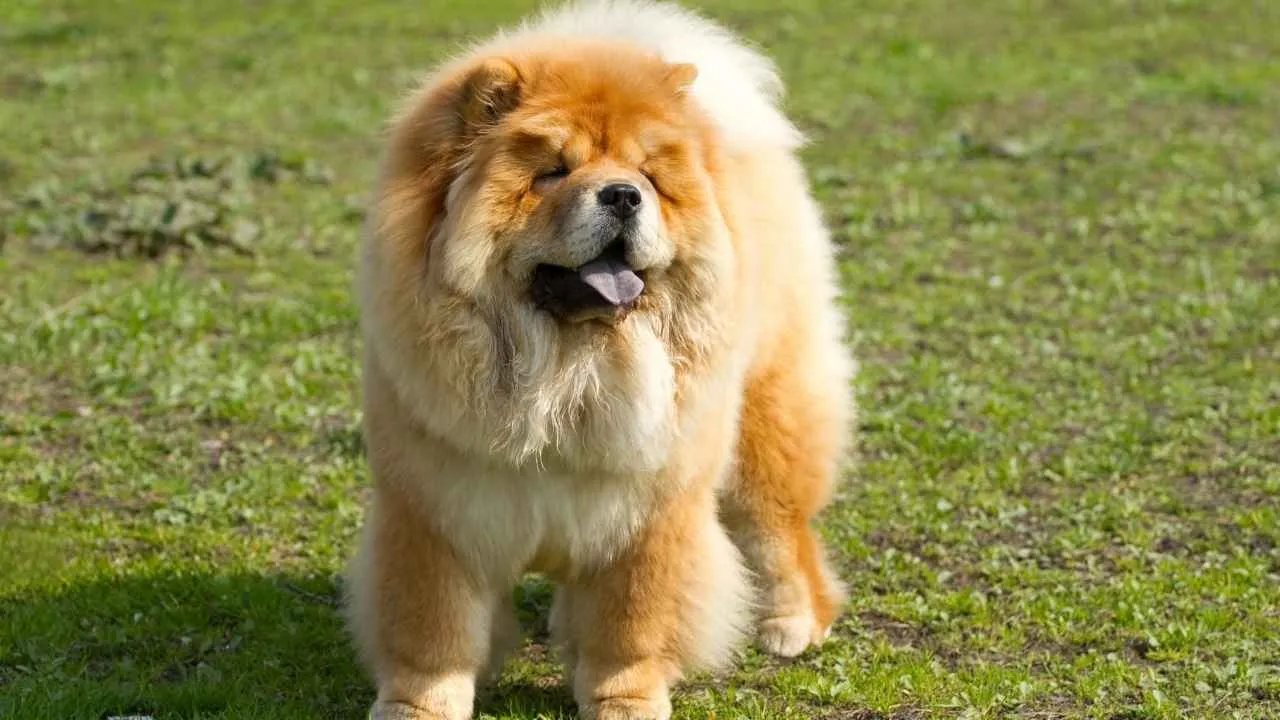
Chow Chows are famous for their lion-like mane and unique blue-black tongue. As per PDSA, they were originally bred in China as guard dogs and hunters, and carry themselves with a noble, almost cat-like independence. Their aloof nature sets them apart from more people-pleasing breeds.
The Chow’s reputation comes from a reluctance to obey repetitive commands. Their intelligence lies in independence, which can frustrate first-time dog owners who expect eagerness to please.
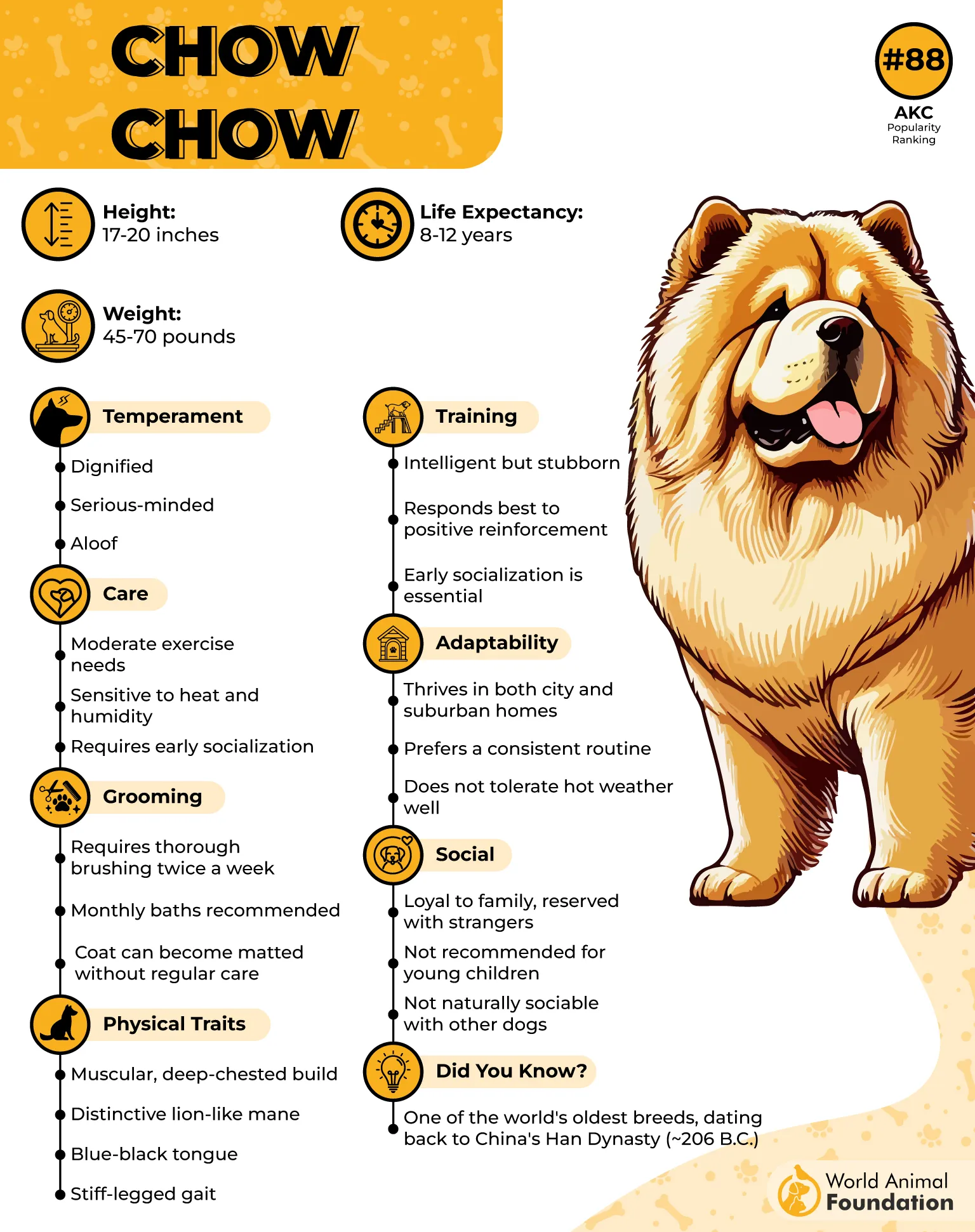
Grooming is a major responsibility with Chow Chows. Their thick double coat sheds heavily, requiring frequent brushing to prevent mats and tangles. Seasonal shedding can be particularly intense.
Socialization is key to raising a well-mannered Chow Chow. Without early training, they may become territorial or aloof with strangers. Positive, patient approaches work best to earn their respect.
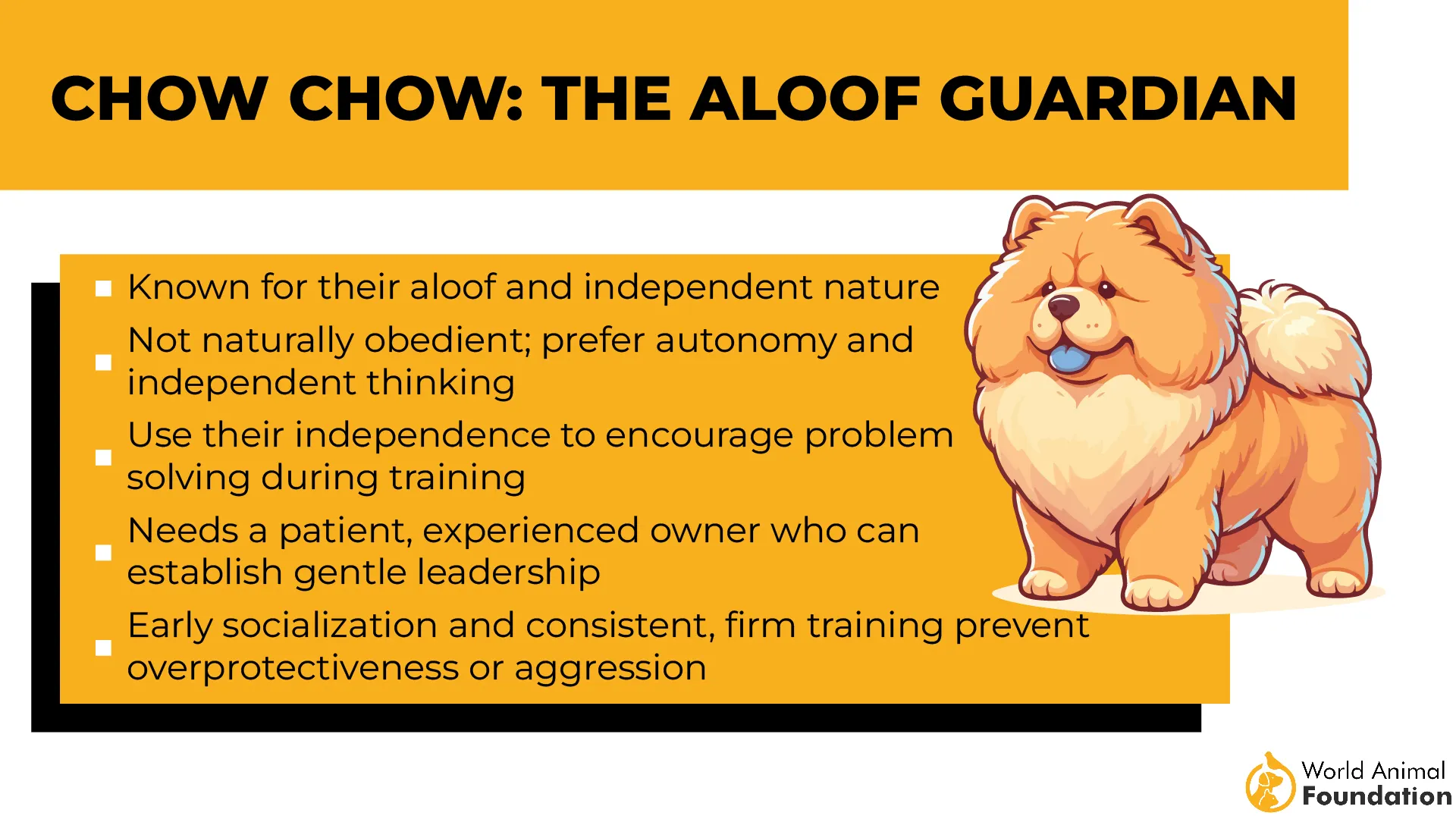
Despite their stubborn streak, Chow Chows are deeply loyal once bonded. They form strong attachments to family members and serve as protective companions with quiet dignity.
Quick Tips
Begin socialization early to reduce aloofness toward strangers.
Groom weekly to manage shedding and maintain coat health.
5. Beagle
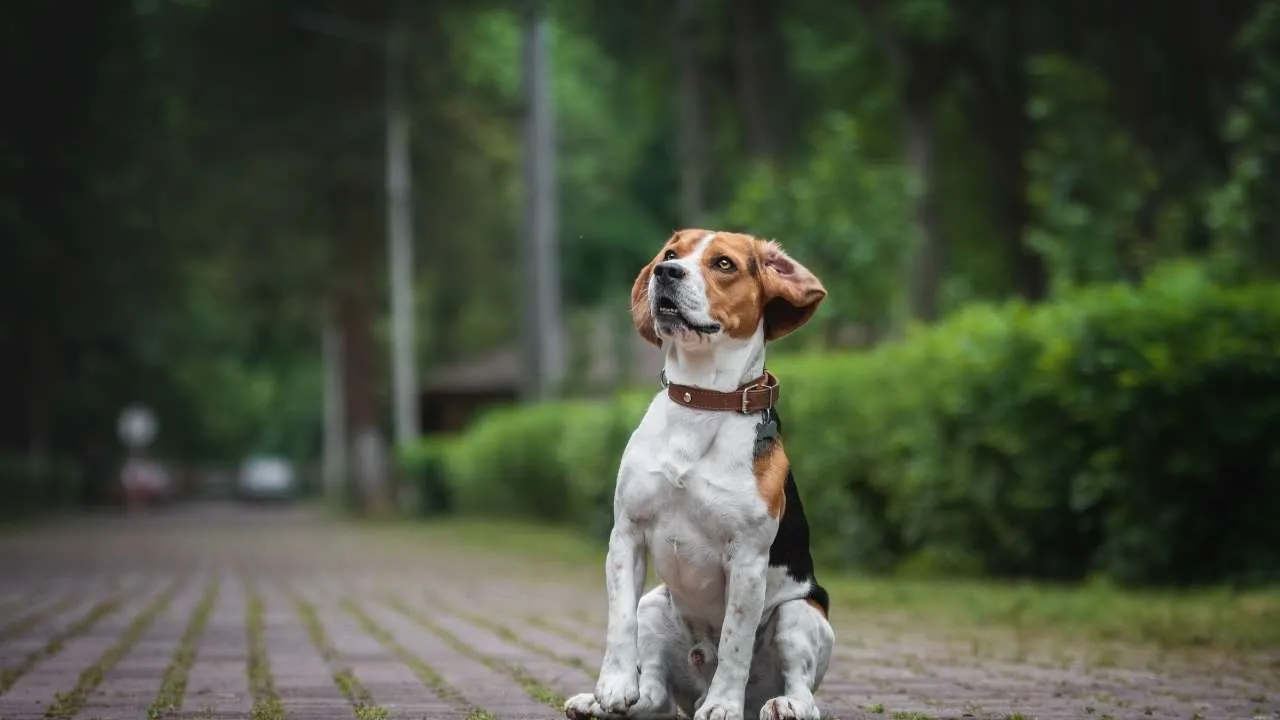
Beagles are known for their expressive faces, floppy ears, and love of adventure. Originally bred as scent hounds, they have extraordinary noses and a deep instinct to follow trails. This curiosity often leads them into mischief.
They frequently appear on lists of “dumbest dog breeds”, largely because their noses often override obedience. A Beagle may seem inattentive, but it’s usually because it has locked onto an intriguing scent.
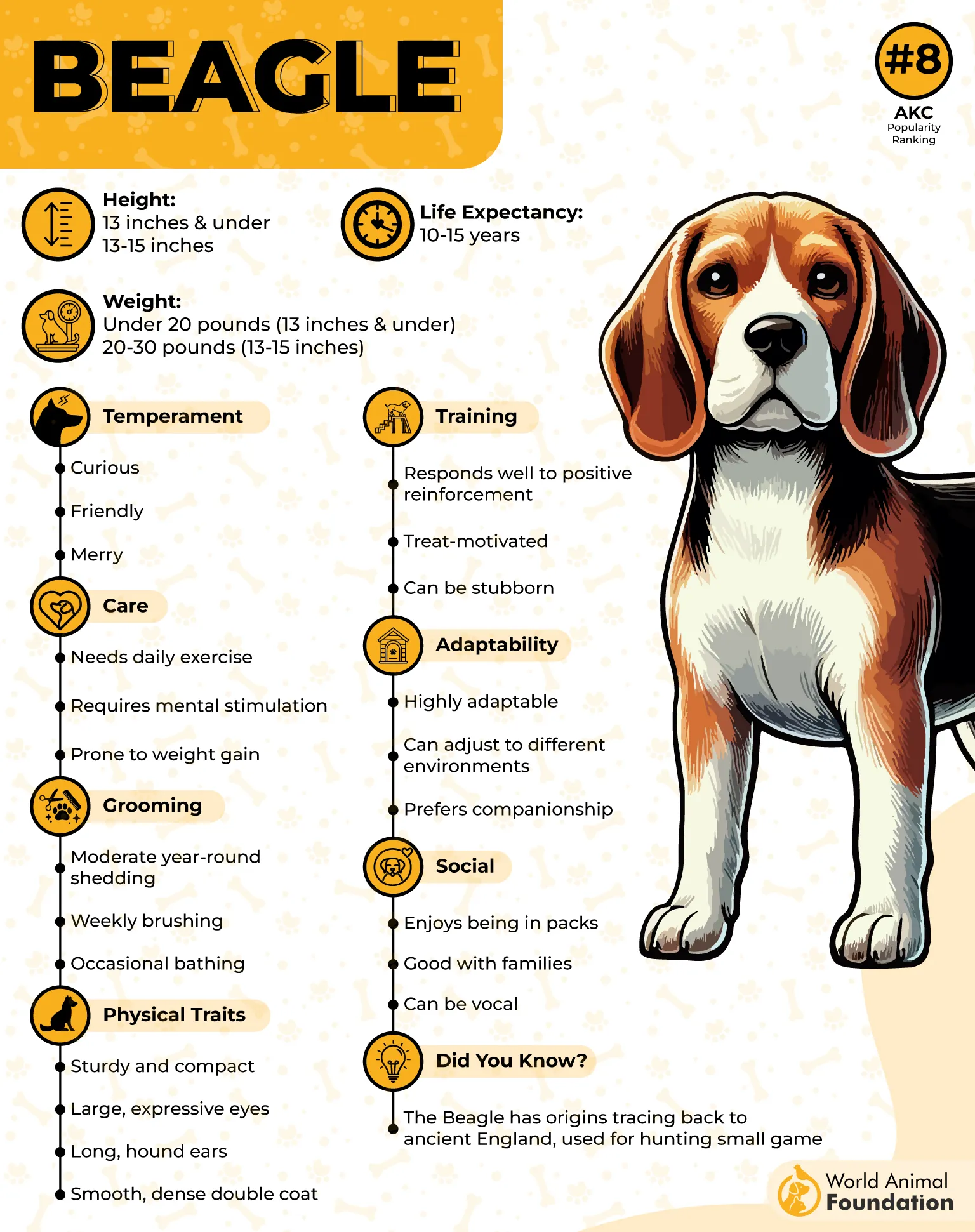
Beagles are highly social and thrive in family settings. They enjoy the company of both humans and other dogs, making them great pack animals. Loneliness can lead to destructive behaviors, so companionship is important.
Exercise needs are moderate but consistent. Long walks, sniffing games, and play sessions help them burn off energy and keep their minds engaged. Without enough activity, they may become vocal or restless.
Their stubbornness can frustrate owners during training. However, with positive reinforcement and patience, Beagles can learn commands while keeping their playful personalities intact.
Quick Tips
Use scent-based games to keep them mentally stimulated.
Secure yards and leashes are essential to prevent wandering.
6. Pekingese
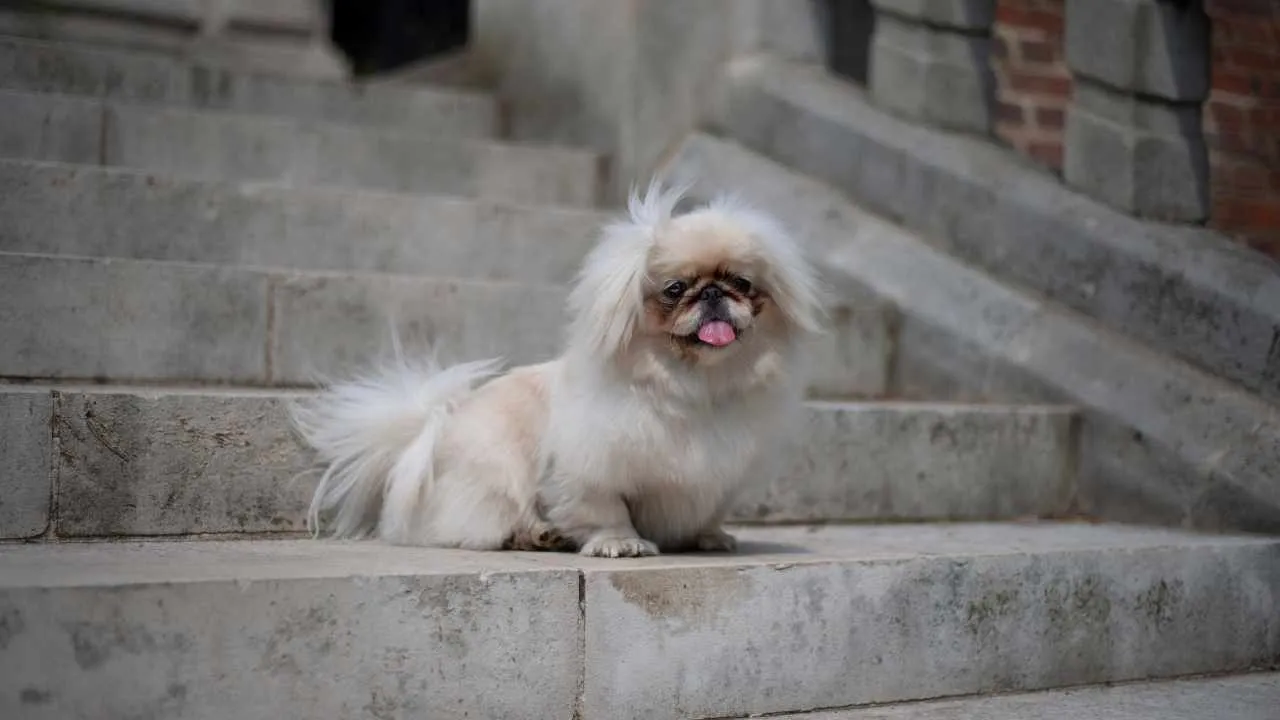
The Pekingese has a long history as a royal companion in ancient China. Their lion-like mane and confident demeanor reflect their noble past. These small dogs carry themselves with remarkable dignity for their size.
Pekingese often land on the “dumbest dog breed” list because of their willful personalities. They prefer to decide when to follow commands, giving them an unfair reputation for being less intelligent.
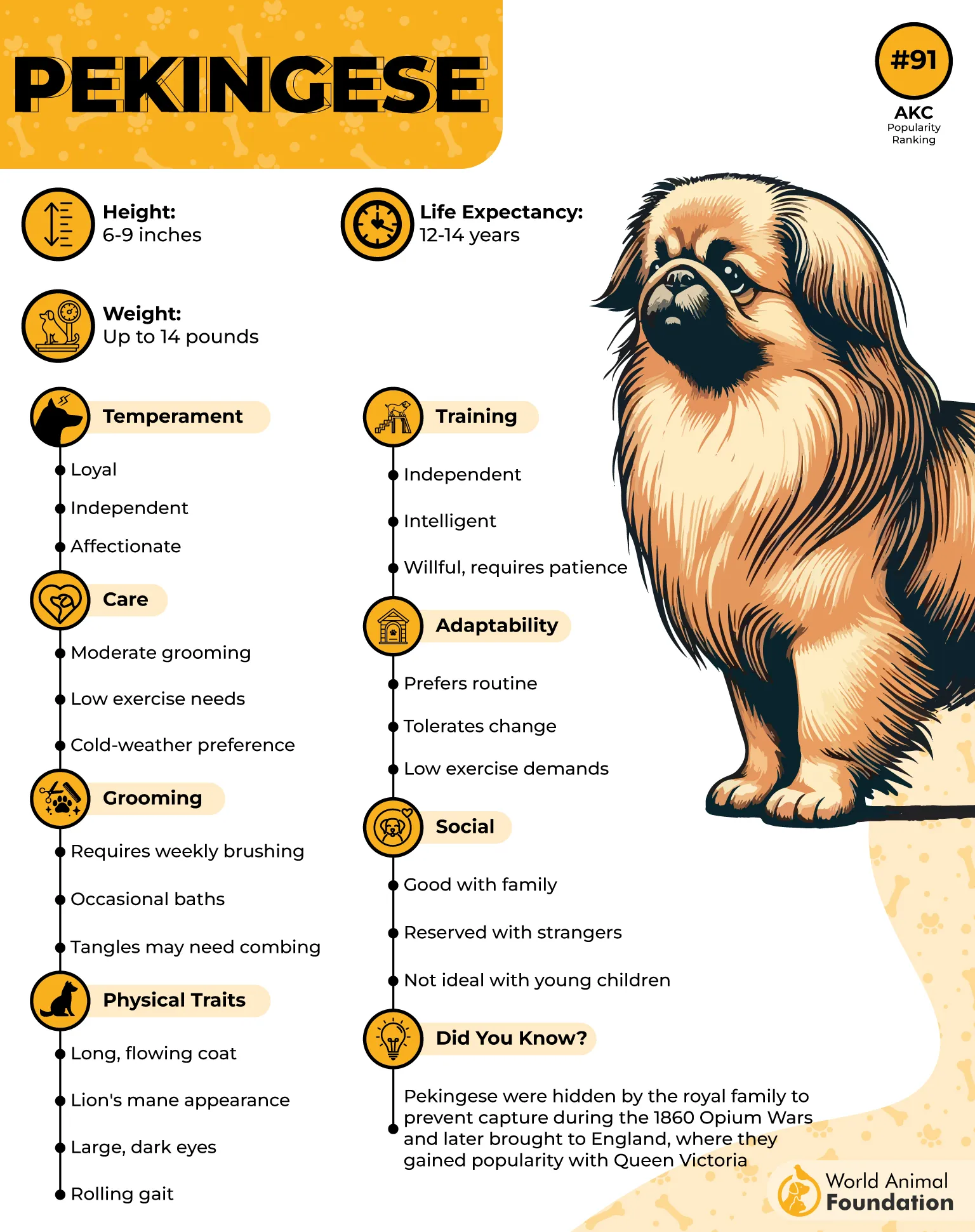
Grooming is a top priority for this breed. Their abundant coat requires frequent brushing to keep it free of tangles and mats. Many owners also seek professional grooming to maintain the breed’s distinctive appearance.
Though small, Pekingese are courageous and sometimes feisty. They are excellent watchdogs, alerting owners to anything unusual with surprising boldness for their size.
Their stubborn streak makes training a challenge. However, their loyalty to family members shines through, rewarding patient owners with affection and devotion.
Quick Tips
Brush their coat multiple times a week to prevent matting.
Keep training sessions short and reward-based to build cooperation.
7. Shih Tzu
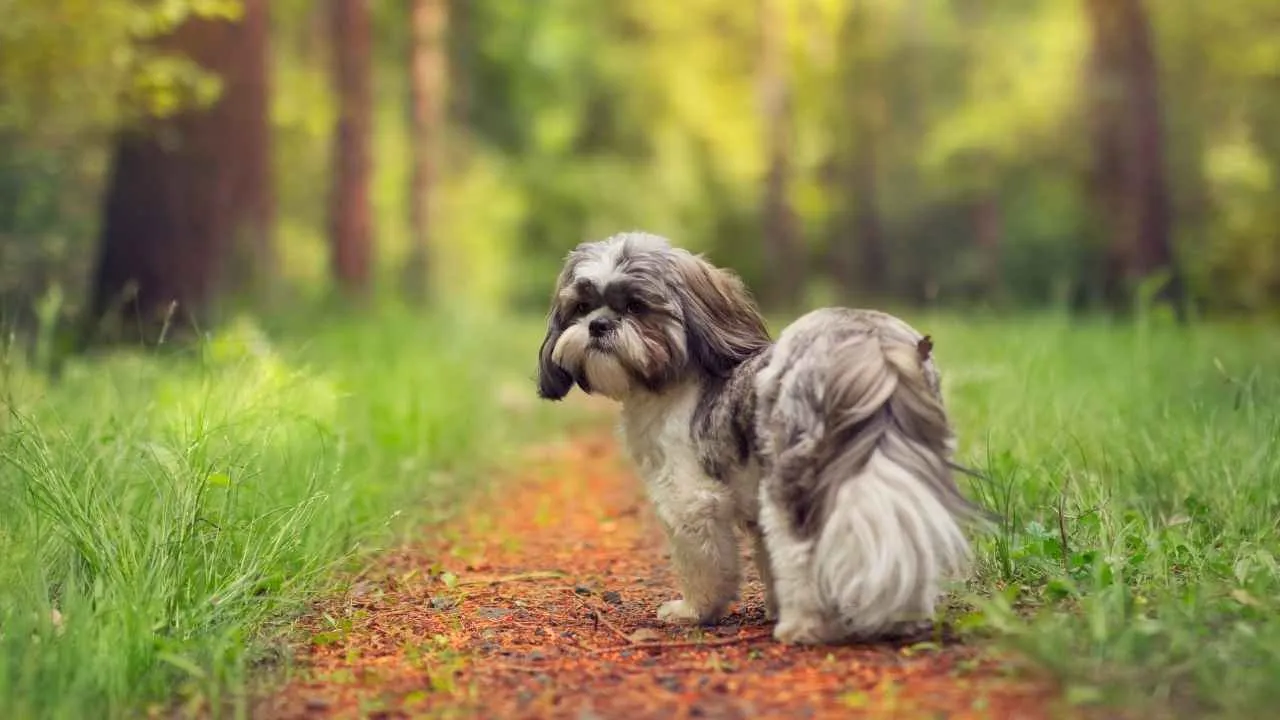
Shih Tzus were bred as lap dogs for Chinese royalty, and their affectionate personalities make them wonderful companions. They are happiest when close to their families, thriving on companionship and attention.
This breed is sometimes labeled as one of the “dumbest dog breeds”, but the reality is that Shih Tzus often prefer comfort to hard work. Their stubborn nature can make training seem like a test of patience.
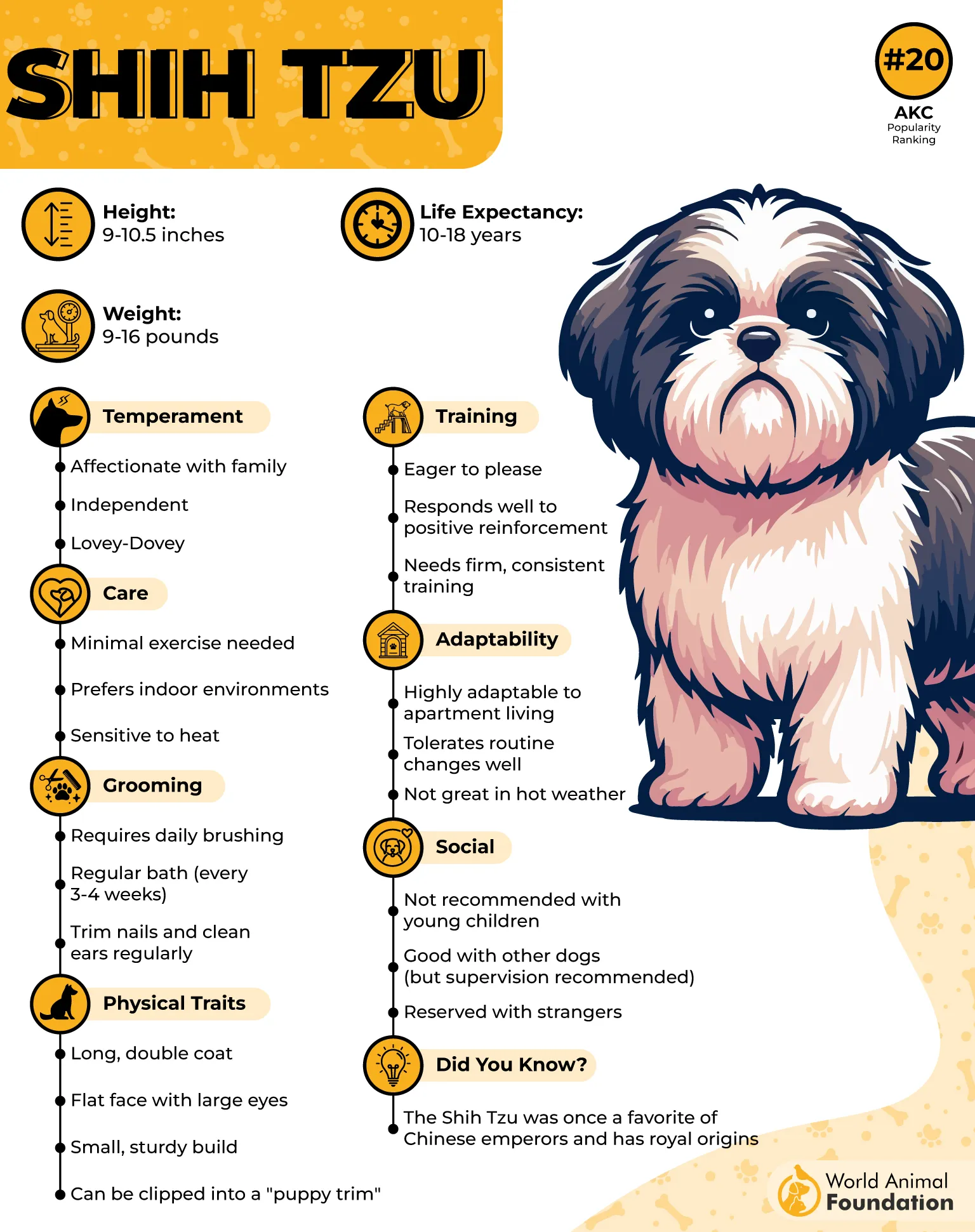
Grooming needs are significant, as their long, flowing coat requires daily maintenance. Some owners opt for shorter “puppy cuts” to simplify care. Regular cleaning around the eyes is also important to prevent irritation.
Shih Tzus are generally friendly with children and other pets, making them ideal for family homes. Their playful personalities balance well with their love of relaxation and cuddles.
Their reputation as stubborn dogs comes from selective listening during training. With gentle reinforcement, they can learn quickly, though they may choose to ignore commands if something more interesting is happening.
Quick Tips
Maintain consistent grooming to prevent tangles and eye issues.
Keep training positive and patient to encourage cooperation.
Conclusion
When it comes to canine intelligence, it’s important to remember that not all dogs learn or respond in the same way. The so-called “dumbest breed” lists often highlight stubborn dogs rather than truly the least intelligent dog breeds.
A Beagle following its nose or an English Bulldog lounging lazily may frustrate trainers, but this doesn’t mean they lack ability. Many dogs show problem-solving skills in their own unique ways, whether it’s learning tricks, figuring out how to open doors, or even finding food in the “wrong” place.
With proper socialization and mental stimulation, even the most stubborn breeds can become pretty smart companions. Some dog breeds may take time to learn tricks, but with patience, many dogs can be potty trained, trained around small children, and taught to respond in ways that enrich the bond between the dog and its owner.


